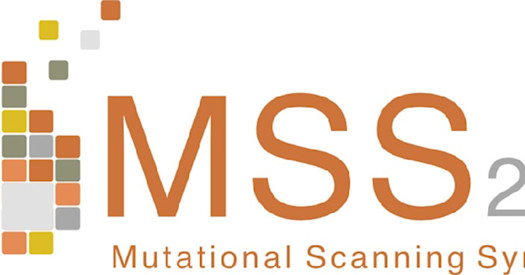 Dr. Rehan Villani: 'We want to host an engaging meeting that builds international networks for variant effect analyses and allows people to build networks and plant the seeds for strong collaboration.'
Dr. Rehan Villani: 'We want to host an engaging meeting that builds international networks for variant effect analyses and allows people to build networks and plant the seeds for strong collaboration.'
[Editor’s note: Dr. Rehan Villani, an applied genomics researcher at QIMR Berghofer – a medical research institute, based in Queensland, Australia – serves on the organizing team for the 2026 Mutational Scanning Symposium, set for next March. Here, Villani discusses the international event.]
Why should scientists and researchers participate in MSS 2026?
This meeting has been at the forefront of technologies associated with variant research for some time, and it will be an excellent opportunity to engage with researchers affiliated with the Atlas of Variant Effects Alliance and the broader mutational scanning community. Everything is developing so quickly in this area of science and this symposium in March is a great place to learn about these developing technologies across the spectrum.
This year will be particularly exciting. At the 2025 symposium in Barcelona, we started to see some of the diversification of outputs of assays and how the field is starting to consider the complexity of variant effects. In March, we will build on those developments.
Also, we have a really engaged scientific community in Australia, especially in regard to clinical applications of variant effects research. We are looking forward to experts coming to Melbourne for the 2026 Mutational Scanning Symposium as we think there will be robust discussion around the impact of variant effects research.
What are your goals for the symposium?
One of our goals us to continue the trajectory of the Mutational Scanning Symposium as a leading international genomics conference. We want to host an engaging meeting that builds international networks for variant effect analyses and allows people to build networks and plant the seeds for strong collaboration, both nationally and internationally.
Another goal is to focus on clinical application of this kind of research. For example, we have confirmed speakers in cardiology and therapeutics management, and will host local champions involved in clinical use of variant impact assays.
One of the AVE Alliance’s goals has been to engage more researchers from the Global South. What is the MSS 2026 organizing team doing to help reach this goal?
Although AVE is a global organization, this is the first time that MSS is being held outside Europe and North America. We are trying very hard to engage with our colleagues in the Asia-Pacific region, both as attendees and presenters, to broaden participation in MSS and AVE.
On the speaker front, we have invited regional leaders to present at the symposium. This includes Dr. Fumitaka Inoue, an Associate Professor in Molecular Developmental Biology at Kyoto University in Japan working on massively parallel reporter assays at scale; and Professor Jian-Rong Yang, from Sun Yat-sen University in Guangzhou, China, who investigates evolutional principles with implications in human health.
In addition, we are putting in place mechanisms to encourage researchers across Asia and the Global South to attend. We are offering reduced registration for researchers from low and middle income countries to participate in the symposium, as well as sharing the meeting across our international networks, and working on maximizing sponsorship opportunities and travel awards to enable as many people as possible to attend.
The objective of the Atlas of Variant Effects Alliance is to create comprehensive variant effect maps to assist in the diagnosis, prognosis, and treatment of disease. When might such an objective be realized and what will it take to do so?
It takes meetings like the Mutational Scanning Symposium. The international community, and especially the AVE Alliance, are starting to realize this objective already. Moreover, the clinical application focus has been one of the things underpinning our progress in the diagnosis, prognosis, and treatment of disease. High throughput mutational scanning assays have such a huge value toward realizing diagnosis and informing treatments.
By hosting meetings like the Mutational Scanning Symposium, the AVE Alliance is building networks that will enable assay translation. The progress we have made as a field and the engagement we have had across the international AVE community have been incredible. The Alliance has partnered with ClinGen on this and is already working on recommendations.
Our symposium – along with the clinical application workshop at the end – will contribute to the AVE Alliance objective. This one of the reasons I am so excited about it .
Any other observations?
I want to encourage people to come. Our Australian variant effect community is very excited to host leaders in variant effect analysis, and the AVE Alliance is advancing both basic and applied understanding of genomic variant impact. There has been such a growing trajectory in this field and this is a great chance to be involved in the international community. There is no other meeting like this one.

